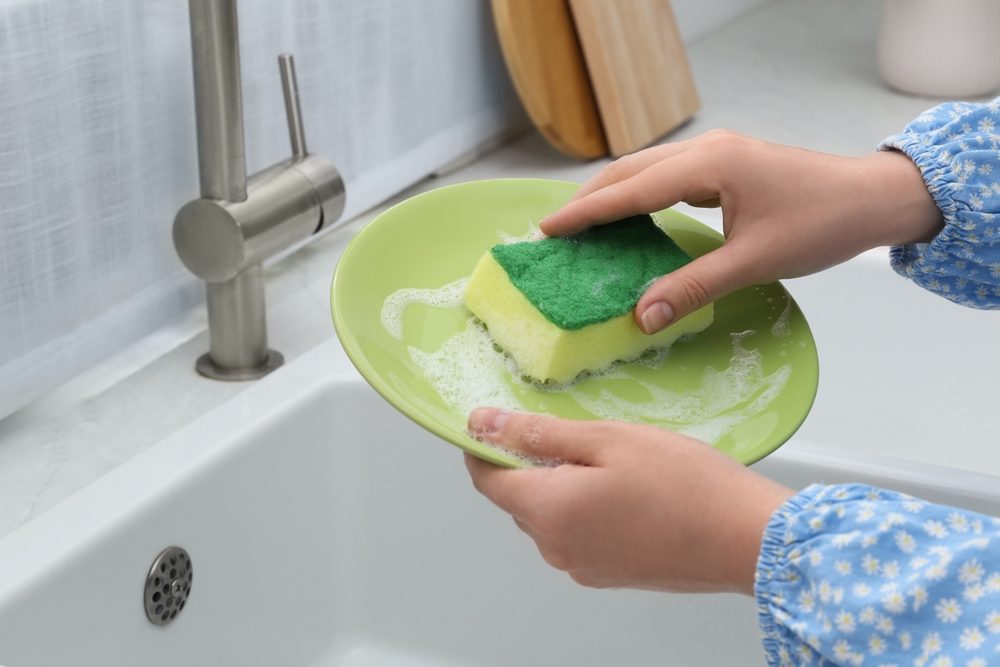Maintaining cleanliness in our home environment is crucial, especially in areas like the kitchen where we prepare our meals. It’s therefore essential to be aware of the condition of our cleaning tools.
Sponges, while indispensable for keeping our dishes clean, can also become breeding grounds for contamination if we do not take the necessary precautions.
The kitchen, a favorable environment for microbes
Microbes find an ideal breeding ground in the humid spaces of the kitchen. According to a study conducted by researchers, it has been observed that some surfaces can harbor over 1,000 bacteria per cm². This finding highlights the fact that our kitchen, often viewed as a sanitary area, is in reality a true hotspot for germs.
Common household items, such as dishcloths, the refrigerator, and trash bins, not to mention sponges, are hotbeds of bacteria. The situation is alarming: germs seem to thrive and multiply at an astonishing rate.
Sponges, in particular, are prime locations for bacteria, with studies revealing the presence of over 10,000 types of bacteria in these everyday cleaning tools.
Good habits to reduce germ proliferation on your sponge
The proliferation of germs in sponges is not solely due to food residues. In fact, the structure of the sponge, with its numerous pores and cavities, provides an ideal habitat for a wide range of bacteria. With every use, layers of grease and dirt accumulate, embedding deeply and making them hard to remove, even during washing.
For those who change their sponges once a month, that’s a good start, but hygiene specialists consider it insufficient. To ensure a healthy kitchen environment, it is recommended to replace them weekly, or even every three days. Even though this may incur a cost, health is worth the investment.
It is vital to be attentive to the condition of your sponge. If it starts to emit an unpleasant odor or shows signs of deterioration, it’s time to replace it without hesitation. Additionally, a few simple habits can help slow the proliferation of bacteria on your sponge. For instance, it’s better to use the sponge only for dishes, avoiding exposure to other potentially contaminated surfaces.
Beyond that, here are some practical tips:
- Rinse your sponge thoroughly after each use to eliminate food residues.
- Allow the sponge to air-dry between uses to prevent moisture.
- Use disinfectants or heat the sponge in the microwave to kill bacteria.
By adopting these simple routines, you can significantly reduce the risk of contamination in your kitchen. Protecting your health and that of your family should be a priority, and it starts with properly caring for your sponges!
How do you manage the hygiene of your sponges? How often do you change them? Share your habits and tips in the comments! Perhaps you have a special method for disinfecting them or extending their lifespan? Your advice could be very helpful to others who are keen on maintaining a healthy kitchen.

